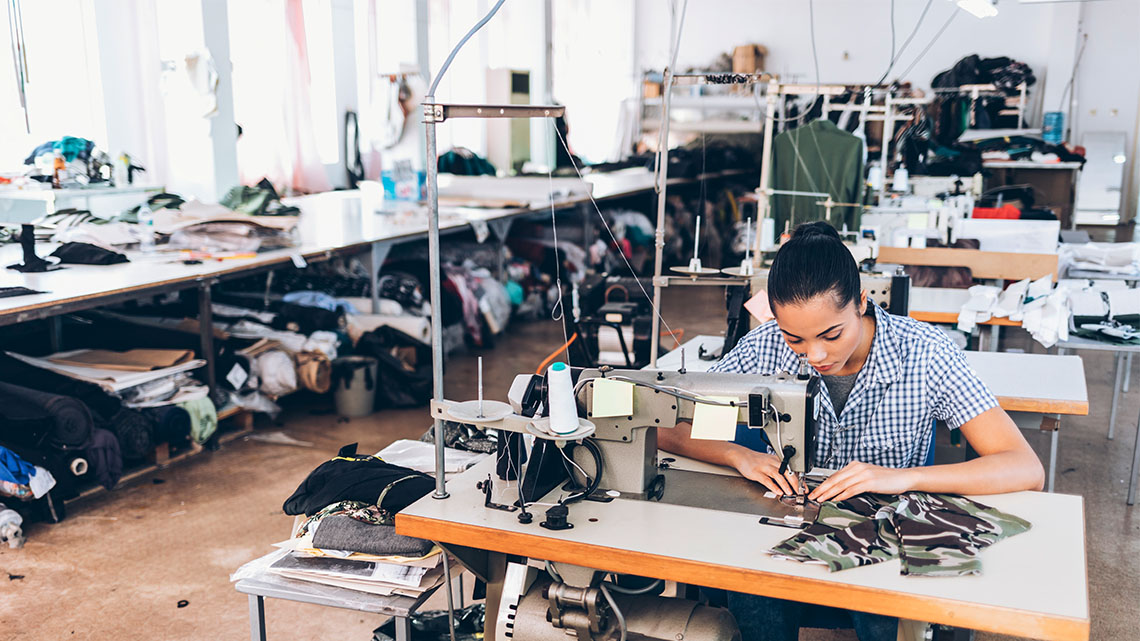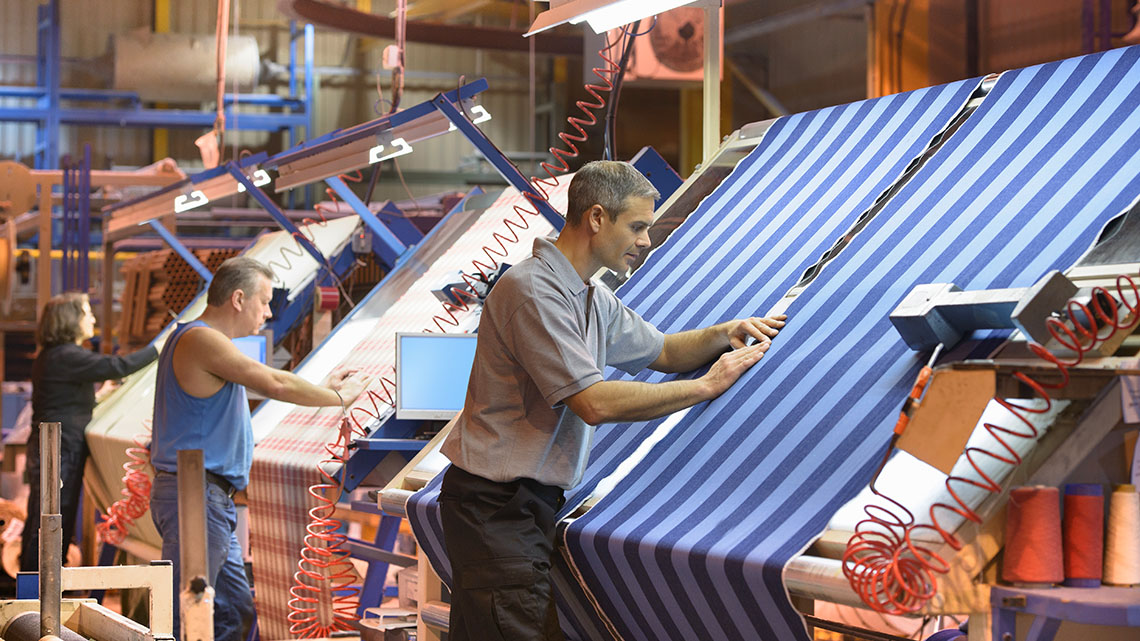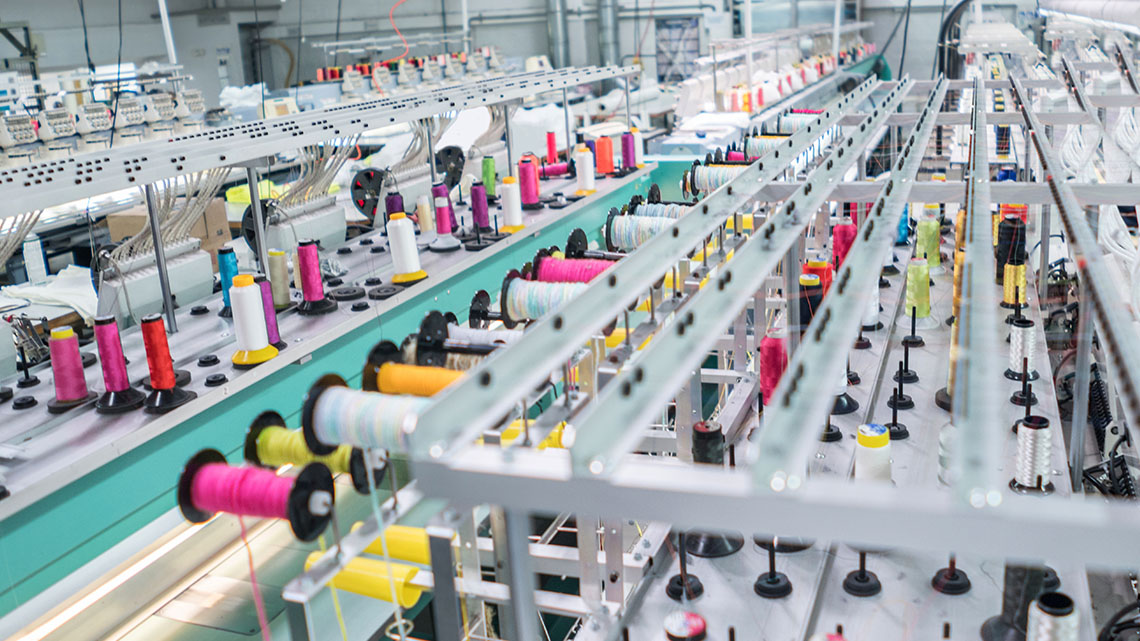Minds On
Fashion as a global process
Have you ever considered the steps that go into producing an item of clothing?
Just like any item that is produced, there is a series of individual steps that are taken to manufacture an individual article of clothing. The approaches may be different depending on the area of the world.
What is the process for creating a piece of clothing?
Explore the following carousel of images of people involved in clothing production all over the world.
Use the images for inspiration as you prepare a possible list of steps for producing a piece of clothing and record your ideas in a method of your choice.
As you explore the images, record anything you notice and wonder about.
Do you think that any of the steps needed to produce an article of clothing might affect the environment or human health? Why or why not?
Record your answer in a method of your choice.
Action
Manufacturing and the environment
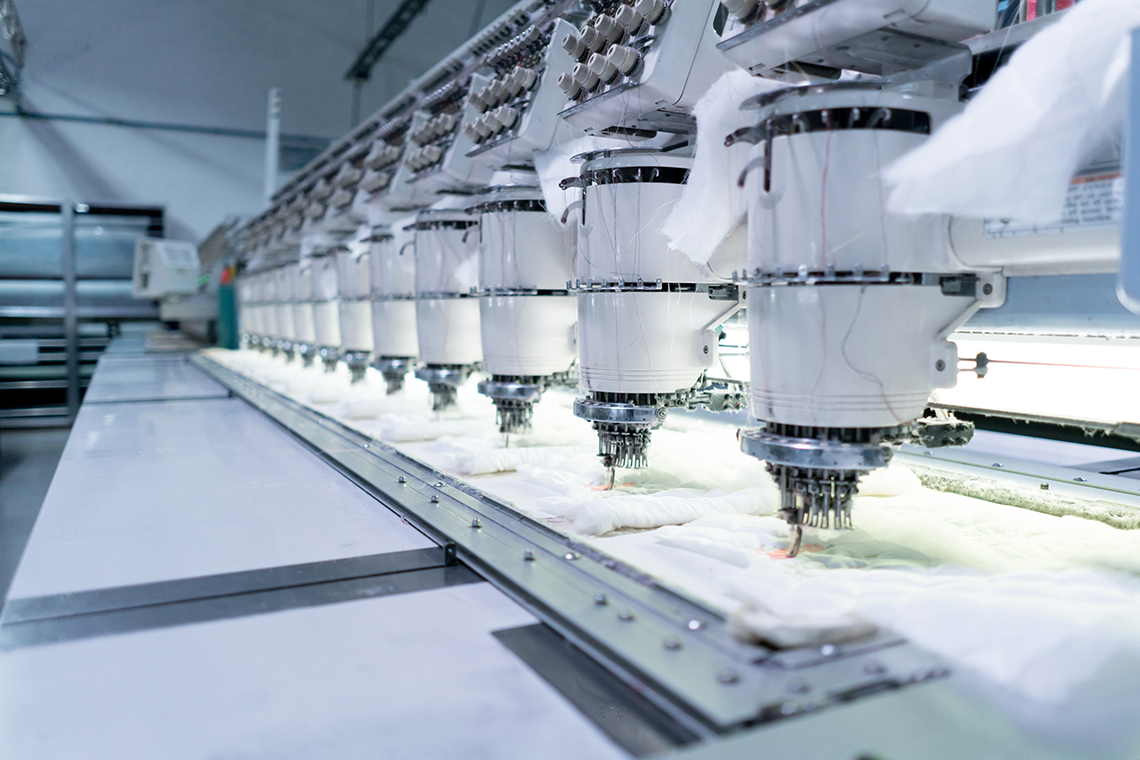
In the Minds On, we focused on the steps involved to manufacture clothing, but this is only one example of a product that is manufactured.
What is manufacturing?
Press ‘Definition’ to learn the meaning of the word manufacturing.
Manufacturing is the process of making products. The businesses that make these products are called manufacturers.
Manufacturing a product takes many steps and each of those steps require people with specialized skills for these specific jobs.

Manufacturing steps include performing research on the product to create, designing the product to manufacture, developing the first model to manufacture, manufacturing the product, and distributing the product to businesses and people. Images of papers, delivery truck and taped boxes represent these steps.
One of the important things that people in these jobs need to think about is the impact of their work on the environment.
The process of manufacturing can have a negative effect on the environment. These effects are different depending on the items that are being manufactured.
We can use the Scientific Research Process to learn more about these impacts on the environment.
Check out this video to learn about the steps of the Scientific Research Process.
Let’s return to the fashion industry.
Research question
How does the fashion industry and the manufacturing of clothing negatively affect the environment and human health? Is there a solution to this issue?
The fashion industry is a worldwide industry. It employs over 75 million people. At each step of the production of clothing, people are needed in the jobs of:
- performing research on the clothing they will create
- designing the clothing to manufacture
- developing the first model to manufacture
- manufacturing the clothing
- distributing the clothing to businesses and people
As the world continues to populate, people are buying more clothing than ever before. The people that are a part of the fashion industry must think about the impact of this industry on the environment.
Press the following tabs to learn about the ways that fashion negatively affects the environment If you have any questions about this information, be sure to record it.
The fashion industry uses millions of gallons of water every day. Water is needed to wash the fabric. It is then bleached and dyed different colours, then the final product is washed again. In many cases the pollutants that are placed into the water during these processes are not removed. These pollutants lead to toxins reaching animals and plants in the water.
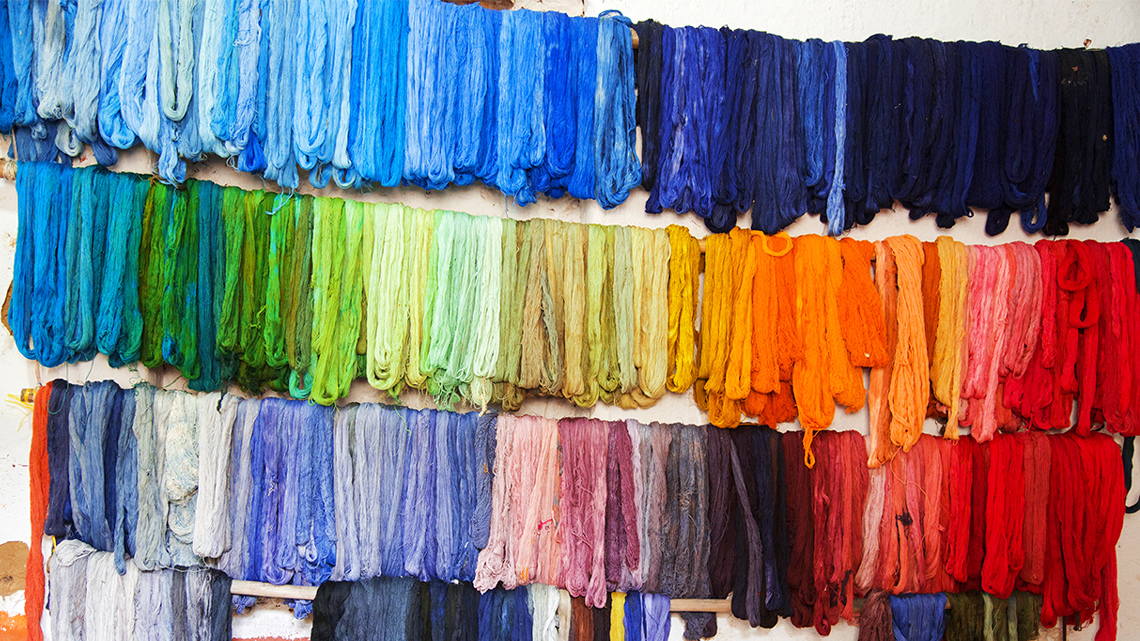
Each of these fabrics that have been dyed have placed pollutants
into the water system.
The fashion industry produces toxins that pollute the air. These toxins are released during the dying and bleaching phases of the process and the drying stage of manufacturing the clothing.
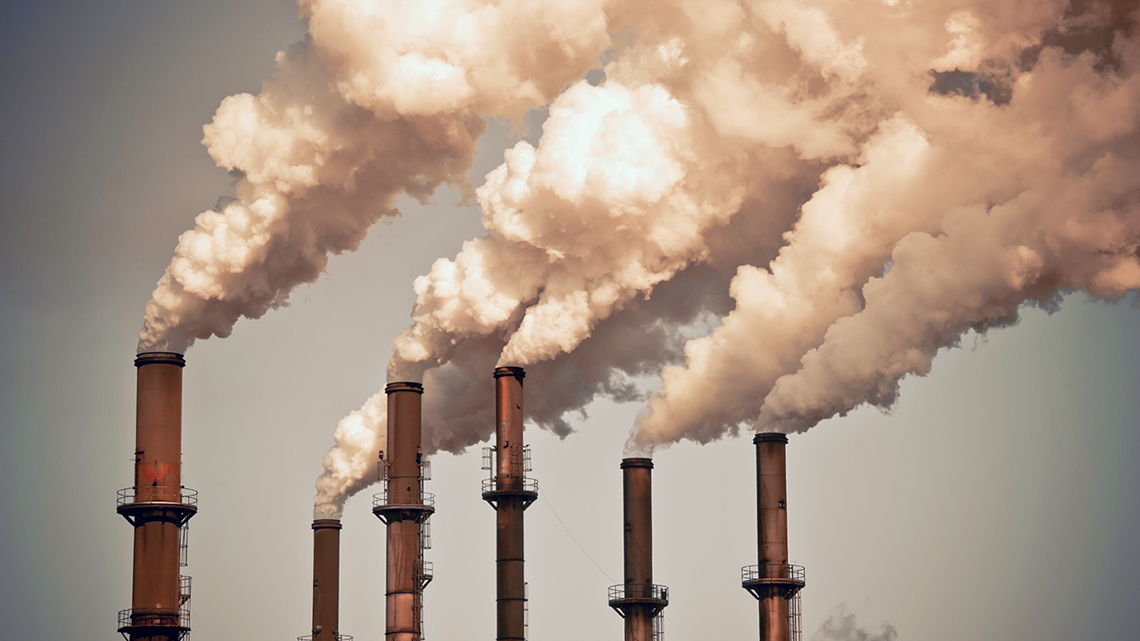
Each year, around the world, 90 million tonnes of clothing is thrown away and placed in landfills. Lint, fibres, and dyes from the clothing get into the soil and water that surrounds the landfills. One of the most harmful fibres is polyester, which is a plastic that is found in 60% of clothing. This fibre does not break down like other fibres do and pollute the water. Microfibers introduced into the ocean are eaten by small fish, which are eaten by larger fish, which introduces plastic into the greater food chain. 85% of human litter on the shorelines around the world are microfibers.
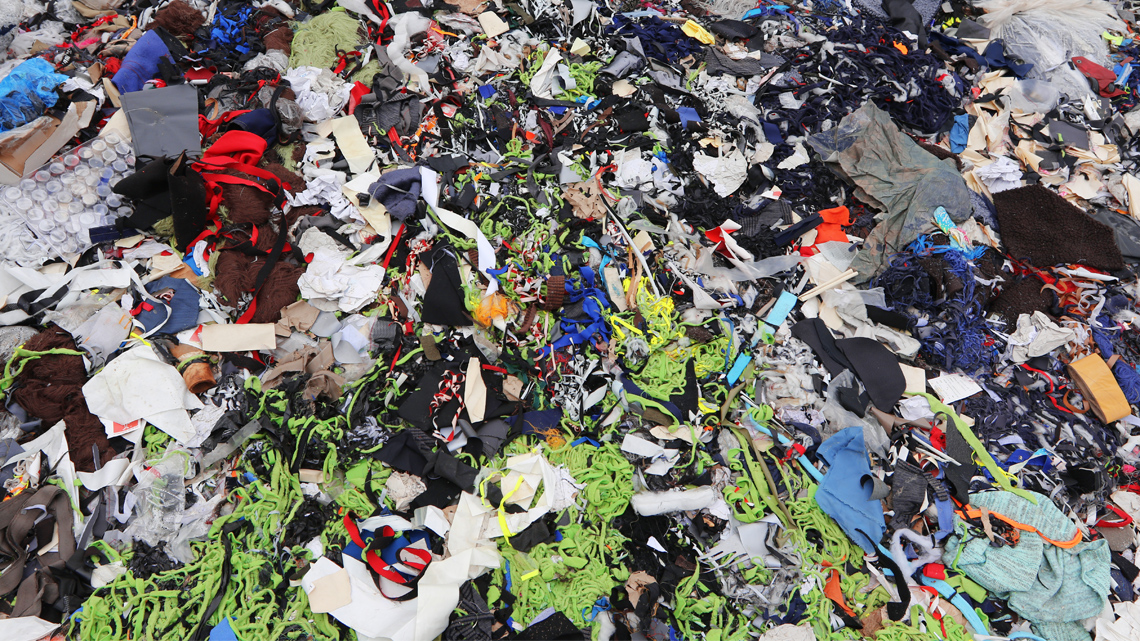
Use your learning about how fashion impacts the environment to answer these true/false questions.
Select the correct answer, then press ‘Check Answer’ to see how you did.
Reflection
Answer the following reflection question in a method of your choice.
At what stages of clothing manufacturing might there be possible ways to change the negative effects of the fashion industry on the environment? Why?
Sustainable fashion

In our research process, we have asked the question:
How does the fashion industry and the manufacturing of clothing negatively affect the environment? Is there a solution to this issue?
We have done research on the negative effects of the fashion industry on the environment. We still have the second part of our question to answer – Is there a solution to this issue?
The answer is yes. The solution for the fashion industry is sustainable fashion.
This means that there needs to be more responsibility by those who produce and consume fashion.
The United Nations is involved and is taking action around the world on how products are produced (created) and consumed (purchased) so that countries can help to reduce the negative effects on the environment.
Global connection
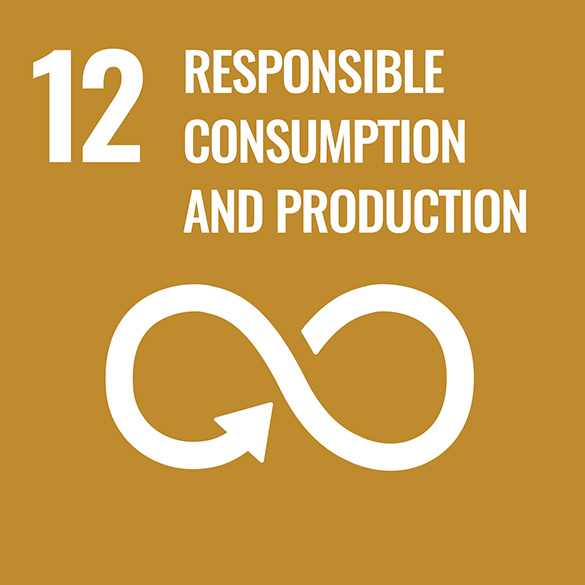
The United Nations (UN) is a group of many countries from around the world that have come together to create a better future for people and the environment. They have created 17 goals called the Sustainable Development Goals.
This learning activity is connected to Goal #12: Responsible Consumption and Production. This means everyone should ensure sustainable consumption and production patterns. Sustainable consumption and production will ensure efficiency, economic growth, and help the environment.
What does sustainable fashion look like?

A webpage highlighting why clothing is sustainable, a person drawing a dress, someone hand-sewing a dress, someone using a sewing machine and a Canada Post truck.
Efforts are currently being made around the world to develop more responsible and sustainable fashion practices.
Sustainable fashion means clothing that is designed, manufactured, distributed, and used in environmentally friendly ways.
Is this possible at each stage of the fashion manufacturing process? Let’s review the process and the people involved.
These are the stages that can be involved in becoming sustainable.
- performing research on the clothing they will create
- designing the clothing to manufacture
- developing the first model to manufacture
- manufacturing the clothing
- distributing the clothing to businesses and people
Solutions for sustainable fashion
Here are just a few possible ways that those in the fashion industry can become more responsible producers of clothing.
- The factory that manufactures the clothing can use renewable energy sources such as solar, wind, or geothermal power – this will lower the greenhouse emissions and put less toxins into the air
- The fabrics that are used in making the clothing can be better for the environment. Polyester can be made from recycled water bottles. There are name brand clothing designers and producers that are making clothing from recycled materials. Organic cotton is another example of a fabric that is better for the environment because it uses much less water than other fibres.
- Fashion designers and manufacturers can reduce the amount of water and energy they use to manufacture clothing. They can also take away plastic packaging in the distribution of the items. They can use recycled or biodegradable materials in their packaging.
These are just some of the ways that those working in the fashion industry can become more responsible producers of fashion.
Responsible consumers

What about consumers? How can consumers be responsible and think about the environment when purchasing clothing?
Record your ideas in a method of your choice.
Press ‘Sample Answer’ to access how consumers can be responsible when purchasing clothing.
- One way people can be responsible is to recycle their clothing. This means instead of throwing old clothing away, donate it to stores that sell recycled clothing, shelters, or charities that accept recycled clothing.
- Instead of buying new clothing, people can shop at recycled clothing stores called thrift stores or second-hand stores, share clothes or even rent clothing. This is responsible because these people are re-using clothing and not allowing them to end up as waste.
- People can mend and repair clothing they own instead of throwing it into landfills.
Use your learning about how to be responsible producers and consumers by completing this sorting activity.
Sharing our learning with others
It is important to share information about the fashion industry with others to help support United Nations Sustainable Development Goal #12 which will help reduce the negative effects of the fashion industry on the environment.
How could this information be communicated?
Scenario #1

A group of Grade 5 students decided to plan a sustainable fashion show.
They had to consider these questions:
- What would the message be? Who is the audience?
- How can this be a method of communicating important information?
Fashion show planning
- The message of this fashion show would be the importance of sustainable fashion
- The audience would be youths aged 10-14 years old. This would be a good audience because they are learning about protecting the environment and this is a way that they can be involved
- The clothing in the fashion show would be recycled materials and clothing manufactured in buildings that use renewable energy – this could be researched
- With each piece of clothing, facts would be shared about how the fashion industry harms the environment and possible solutions through each step of the manufacturing process
- The fashion show would end with ways that people can be responsible consumers of fashion including recycling and shopping at thrift stores.
Scenario #2

A second group of Grade 5 students decided that this information could be communicated through a broadcast or advertisement for sustainable fashion.
Press ‘Definitions’ to access the meaning of the words broadcast and advertisement.
A broadcast is information that is shared through video or audio.
An advertisement is a chance to inform the public about something and make them form an opinion about it.
They had to consider these questions:
- What would the message be? Who is the audience?
- How can this be a method of communicating important information?
Broadcast/ advertisement planning
- The message of this broadcast or advertisement would be the importance of sustainable fashion
- The audience would be youths aged 10-14 years old. This would be a good audience because they are learning about protecting the environment and this is a way that they can be involved
- The broadcast would begin with the harmful effects of the fashion industry on the environment
- The next important piece of the broadcast would be the possible solutions through each step of the manufacturing process
- The broadcast would end with ways that people can be responsible consumers of fashion including recycling and shopping at thrift stores.
Consolidation
The Scientific Research Process

Throughout this learning activity, you learned about the fashion industry and its effects on the environment shown through the Scientific Research Process.
Now it’s your turn to learn about a type of sustainable fashion and answer the following questions.
- How can consumers participate in sustainable fashion?
- Are there any challenges to sustainable fashion that consumers might face?
- Does the type of sustainable fashion you chose help the environment? If so, how?
- How will you summarize your findings and communicate to an audience?
Check out this video to learn about the steps of the Scientific Research Process.
Press the following tabs to learn about different types of sustainable fashion. Choose one you would like to learn about. You may also continue your research on the Internet.
Remember to be safe when searching online.

Eco-friendly or green fashion is when brands and clothing companies try to minimize the impact on the environment. Fabrics like polyester come from non-renewable resources which is damaging to the environment. Eco-friendly fabrics have less of an impact on the environment. A few examples of eco-friendly fabrics include hemp, bamboo and linen.
It’s important to remember that no piece of clothing is 100% eco-friendly because water and energy is needed to produce all clothes.

A small store front with two or three different items in the window. Next to it is a large storefront with tons of items (different styles) in the window.
Slow fashion is the opposite of fast fashion. So, what is fast fashion? Fast fashion is when clothes are designed and manufactured in a way that quickly produces a lot of clothing. Fast fashion is also when you have a style of clothes that might be gotten rid of in a few years because it’s out of style or the fabric is not good quality.
Slow fashion is about finding a more sustainable way to make clothes. Characteristics of slow fashion include:
- clothes made from high quality and sustainable fabrics like linen
- clothes that are often sold in smaller stores
- clothes that are locally produced
- clothes that don’t follow a current style but can instead be worn for many years

Upcycled Fashion is when you transform clothes, accessories, and other textiles into new products. Upcycled items could be either items that were created but did not sell or items that have already been bought and worn and then discarded.
Textiles are a type of cloth or woven fabric.
Upcycled fashion pieces are one of a kind. For example, a designer used curtains to make a new dress. Or a bed cover to make a jacket. The possibilities are endless.
Because upcycled fashion is one of a kind, it’s easy for items to sell out quickly.

Thrift shops are stores where you can buy second-hand clothes and accessories. Using thrift stores allows someone to be more environmentally conscious. It also helps to slow down fast fashion. Fast fashion is when clothes are designed and manufactured in a way that quickly produces a lot of clothing.
As thrifting becomes more popular, it’s important to recognize that thrift stores are a valuable resource for those in need in the community. Some thrift stores, seeing a rise in popularity, have increased their prices, which doesn’t help to serve the community that really needs the second-hand clothes.
When you are ready to communicate your findings, prepare a presentation using a method of your choice.
Your presentation should include the following:
Think about it!
Answer the following reflection questions in a method of your choice.
What was the most surprising thing you learned about your type of sustainable fashion? Why was it surprising?
Do you think sustainable fashion can make a positive impact? How would you encourage others to become consumers of sustainable fashion?
Reflection
As you read through these descriptions, which sentence best describes how you are feeling about your understanding of this learning activity? Press the button that is beside this sentence.
I feel...
Now, record your ideas using a voice recorder, speech-to-text, or writing tool.

